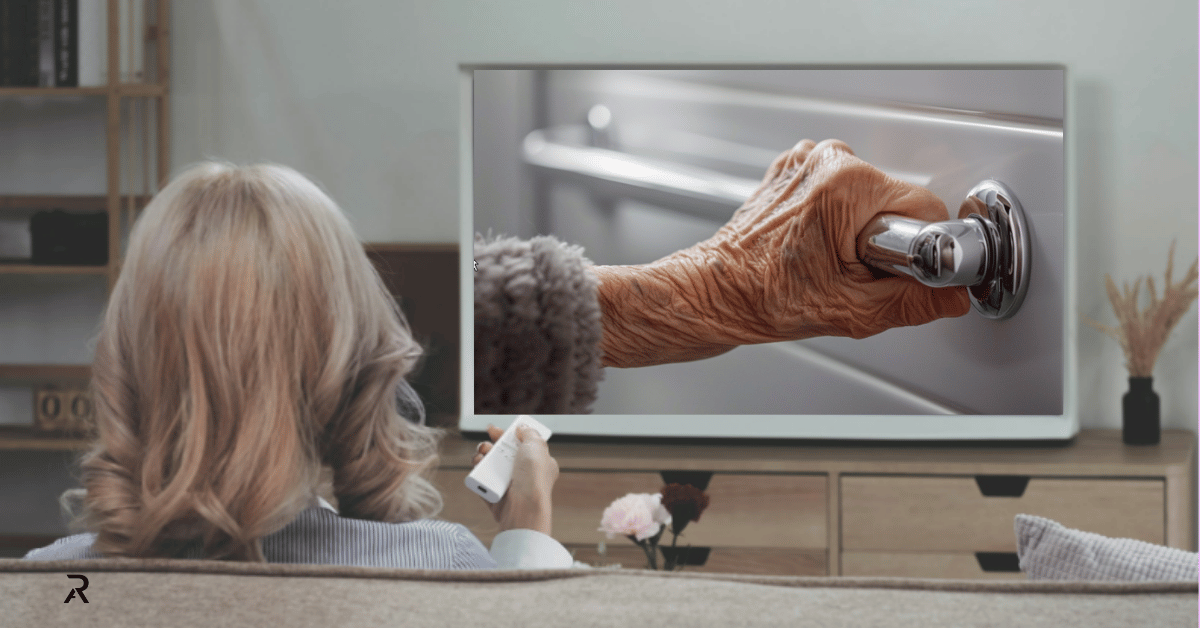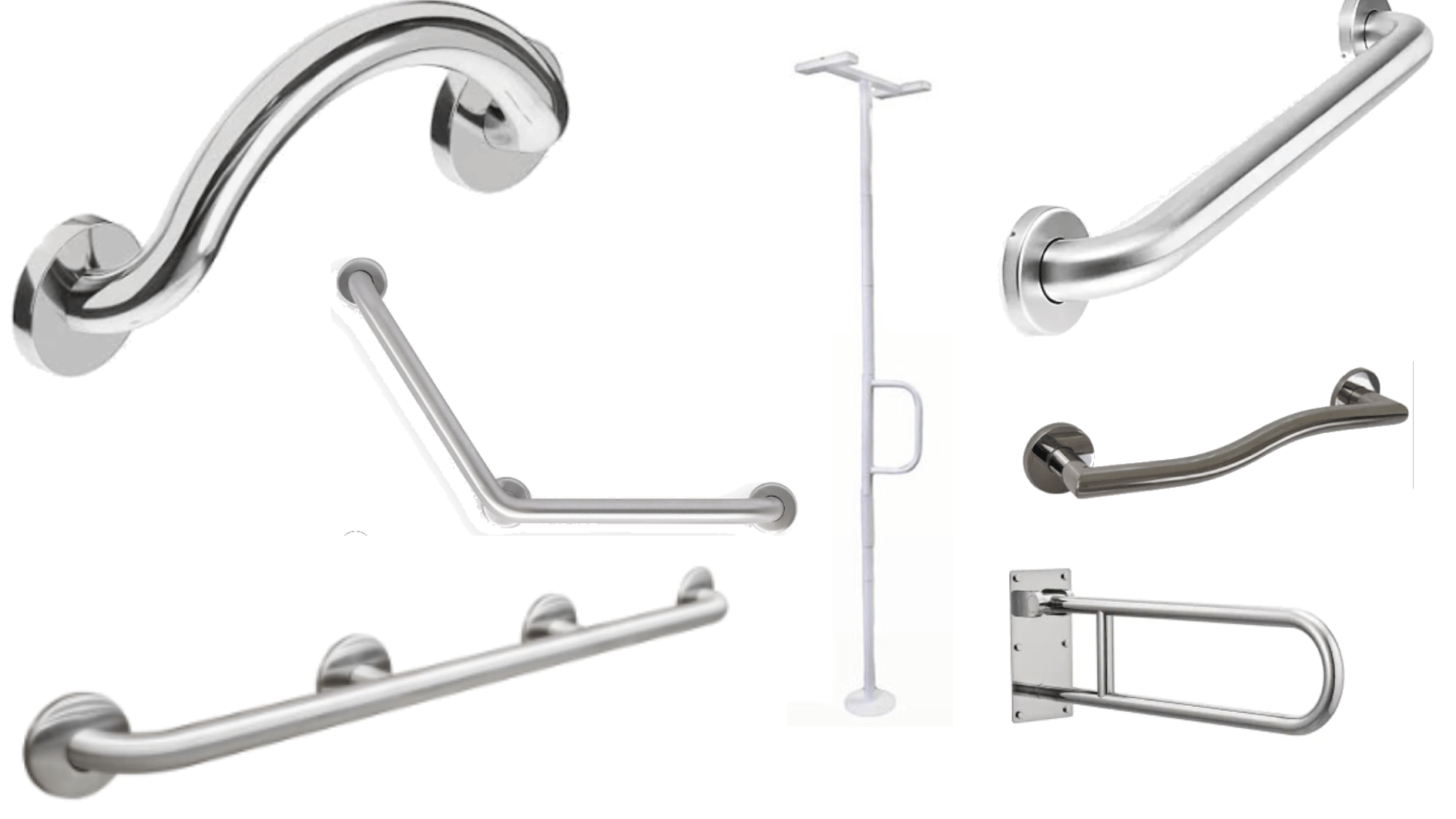
Grab Bars: Vital for Home Safety and Accessibility
Grab bars, also known as safety bars, safety rails, support bars, or handicap bars, are essential home safety devices that offer support, stability, and accessibility for people of all ages and abilities. These sturdy mobility aids make everyday tasks easier and significantly reduce the risk of falls and accidents in the home.
Grab Bars Table of Content Links
Introduction and Why This Article Matters (Listen Now!)
Listen to the Introduction about Grab Bars and Safety
Click the play button below to learn more:
The Importance of Home Safety Solutions
Creating a safe and comfortable living environment is crucial for everyone, particularly for older adults and those with mobility challenges. Falls are a leading cause of injury among these populations, often resulting in serious consequences such as fractures, head trauma, and lengthy recovery periods. By incorporating safety rails and other accessibility solutions into your home design, you can greatly minimize the risk of accidents and promote greater independence.
Versatile Placement Options for Safety Rails
One of the key advantages of support bars is their versatility. These home safety devices can be installed in various locations throughout the home to provide assistance where it’s needed most. Some common placement options include:
- Bathroom: The bathroom is a high-risk area for slips and falls, especially near the toilet, shower, and bathtub. Installing shower safety rails, toilet assist bars, or bathroom handrails in these locations offers added stability during daily hygiene routines.
- Stairways: Navigating stairs can be challenging for those with balance or mobility issues. A securely mounted stairway handrail provides a reliable grip and helps prevent falls.
- Bedrooms: Placing a bedroom assist bar near the bed can make getting in and out much safer and easier, particularly for those with limited mobility.
- Hallways: Long hallways can be difficult for individuals who need frequent rest or support while walking. Installing hallway support rails along the wall offers a convenient handhold and reduces the risk of falls.
Grab Bar Types and Descriptions

The following table lists various types of grab bars and provides a brief description of each. While this is not an exhaustive list, it covers many commonly used types to enhance safety and accessibility in the home.
| Grab Bar Type | Description |
|---|---|
| Adjustable Grab Bars | Feature adjustable length or positioning for customizable support. |
| Angled Assist Bars | Designed with an angled portion for a more ergonomic grip, it is often used near toilets or in showers. |
| Bariatric Grab Bars | Heavy-duty grab bars are designed to support larger individuals with higher weight capacities. |
| Bathroom Handrails | General handrails in bathrooms for added support. |
| Bathtub Safety Rails | Specifically designed for use in bathtubs to prevent slips and falls. |
| Bathtub Transfer Grab Bars | Assist with transferring in and out of the bathtub. |
| Bedroom Assist Bars | Placed near beds to assist with getting in and out of bed. |
| Clamp-On Tub Rails | Clamp onto the bathtub's side to support getting in and out. |
| Compact Grab Bars | Smaller in size for use in tight spaces. |
| Corner Grab Bars | Installed in corners to provide support from multiple angles. |
| Curved Grab Bars | Designed with a curve for ergonomic support. |
| Decorative Grab Bars | Designed to blend with home decor while providing safety. |
| Designer Grab Bars | Stylish designs that blend with modern decor. |
| Dual-Purpose Grab Bars | Combine support with additional features like soap dishes or shelves. |
| Ergonomic Grab Bars | Designed with ergonomic grips for comfortable use. |
| Fixed Grab Bars | Permanently fixed in place for secure support. |
| Flip-Up Safety Rails | It can be folded up when not in use, making it ideal for tight spaces or maintaining a cleaner look. |
| Floor-to-Ceiling Support Bars | It provides support from floor to ceiling; it is ideal for standing assistance or robust support. |
| Folding Grab Bars | Can be folded away when not in use; ideal for saving space. |
| Glow-in-the-Dark Grab Bars | Feature glow-in-the-dark elements for visibility in low-light conditions. |
| Grab Bars with Shelves or Trays | Include built-in shelves or trays for added functionality. |
| Hallway Support Rails | Installed along hallways to offer a convenient handhold. |
| Heavy-Duty Grab Bars | Designed to support higher weight capacities; typically used in commercial or heavy-use settings. |
| Hospital Bed Grab Bars | Attached to hospital beds to provide support for patients. |
| Kid-Friendly Grab Bars | Designed with children in mind; often feature colorful and fun designs. |
| Lighted Grab Bars | Equipped with lights for visibility in low-light conditions. |
| L-Shaped Grab Bars | Designed in an L-shape to provide support in two directions. |
| Outdoor Grab Bars | Made from materials that withstand outdoor conditions. |
| Padded Grab Bars | Feature padding for a softer, more comfortable grip. |
| Pivoting Grab Bars | Pivot to different angles for customized support. |
| Plastic Grab Bars | Made from plastic; lightweight and often less expensive. |
| Portable Grab Bars | Lightweight and easy to transport; often use suction or clamp mechanisms. |
| Recessed Grab Bars | Installed recessed into the wall for a cleaner look. |
| Rehabilitation Grab Bars | Used in rehabilitation settings to aid in recovery exercises. |
| Removable Grab Bars | Can be easily removed and reinstalled; often use suction or clamp mechanisms. |
| Residential Grab Bars | Designed for use in homes, it comes in various styles and materials. |
| Rotating Grab Bars | Can rotate for versatile positioning. |
| Shower Safety Rails | Installed in showers to provide added stability and prevent slips and falls. |
| Sliding Grab Bars | Can slide along a track for adjustable positioning. |
| Stainless Steel Grab Bars | Made from stainless steel for durability and resistance to corrosion. |
| Stairway Handrails | Installed along stairways to aid in safe navigation. |
| Straight Support Bars | This is a basic type offering a simple, straight support rail. It can be installed horizontally, vertically, or at an angle. |
| Suction Cup Grab Bars | Attach to surfaces using suction cups; not as secure as permanently mounted bars. |
| Telescoping Grab Bars | Feature a telescoping mechanism for adjustable length. |
| Textured Grab Bars | Feature a textured surface to provide a secure grip, even when wet. |
| Toilet Assist Bars | Placed near toilets to assist with sitting and standing. |
| U-Shaped Grab Bars | Designed in a U-shape for versatile support options. |
| Vertical Grab Bars | Installed vertically to provide support for standing or climbing. |
| Wave Grab Bars | Designed with a wave-like shape for a more stylish and ergonomic grip. |
| Wooden Grab Bars | Made from wood for a more natural look; often used in residential settings. |
This table provides an overview of various grab bars, helping you choose the best options for your specific needs and enhancing the safety and accessibility of your home.
Choosing the Right Assist Bar
When selecting a safety rail for your home, consider the following factors to ensure you choose the best option for your needs:
- Size: Support bars come in various sizes to accommodate different spaces and user requirements. Make sure to choose a bar that is long enough to provide ample gripping space and support.
- Materials: Opt for durable assist bar materials, such as stainless steel or non-corrosive options, especially in moisture-prone areas like bathrooms. These materials are easy to clean and maintain their strength over time.
- Texture: Look for safety rails with a textured or non-slip surface to provide a secure grip, even when hands are wet or slippery.
- Weight Capacity: Ensure that the support bar you choose is rated to support the necessary weight capacity, typically at least 250 pounds, to ensure safety and stability.
- Installation: Consider the assist bar installation process and whether you need professional assistance. Some safety rails require mounting to wall studs, while others may use specialized anchors.
ADA Compliance and Guidelines
When installing support bars in your home, it’s beneficial to be aware of ADA (Americans with Disabilities Act) guidelines for placement and dimensions. Some key considerations include:
- Assist bar diameter: The ADA recommends a 1.25 and 2-inch diameter for optimal gripping.
- Spacing from the wall: Safety rails should be installed with a minimum of 1.5 inches of space between the bar and the wall.
- Height: For most applications, the ADA suggests a height of 33-36 inches from the floor to the top of the support bar.
- Length: The required length of an assist bar depends on its location and purpose. For example, a shower safety rail should be at least 24 inches long, while a toilet assist bar should be 42 inches long.
By adhering to these guidelines, you can ensure that your support bars are both safe and compliant with accessibility standards.
Identifying Essential Features of Grab Bars for Home Safety
Choosing the right grab bars is crucial for ensuring safety and preventing falls in your home. Test your knowledge by answering the following question about the recommended features of grab bars.
Which of the following is NOT a recommended feature of grab bars for home safety?
- A. Grab bars should have a textured surface
- B. Grab bars should be made from non-corrosive materials
- C. Grab bars should have sharp edges for better grip
- D. Grab bars should be installed at the correct height according to ADA guidelines
People Also Ask (PAA)
Why are assist bars angled?
Angled assist bars provide a more ergonomic and comfortable grip, particularly when transitioning between sitting and standing positions. They offer support in multiple directions, enhancing stability and safety in areas like toilets and showers.
Are suction cup safety rails safe?
While suction cup safety rails can be tempting due to their ease of installation, they are not as secure as permanently mounted bars and should not be relied upon for full-body weight support. For optimal safety, investing in properly installed wall-mounted assist bars is always best.

Final Thoughts
Grab bars, also known as safety rails or assist bars, are vital for enhancing home safety and accessibility. Providing support and stability in key areas throughout the home greatly reduces the risk of falls and accidents, promoting independence and peace of mind for individuals of all ages and abilities.
When choosing support bars, consider size, materials, texture, weight capacity, and installation to ensure you select the best options for your specific needs. Also, be mindful of ADA guidelines for assisting bar placement and dimensions to ensure compliance with accessibility standards.
Don’t wait until an accident happens – invest in safety rails today and create a safer, more accessible living environment for yourself and your loved ones.


